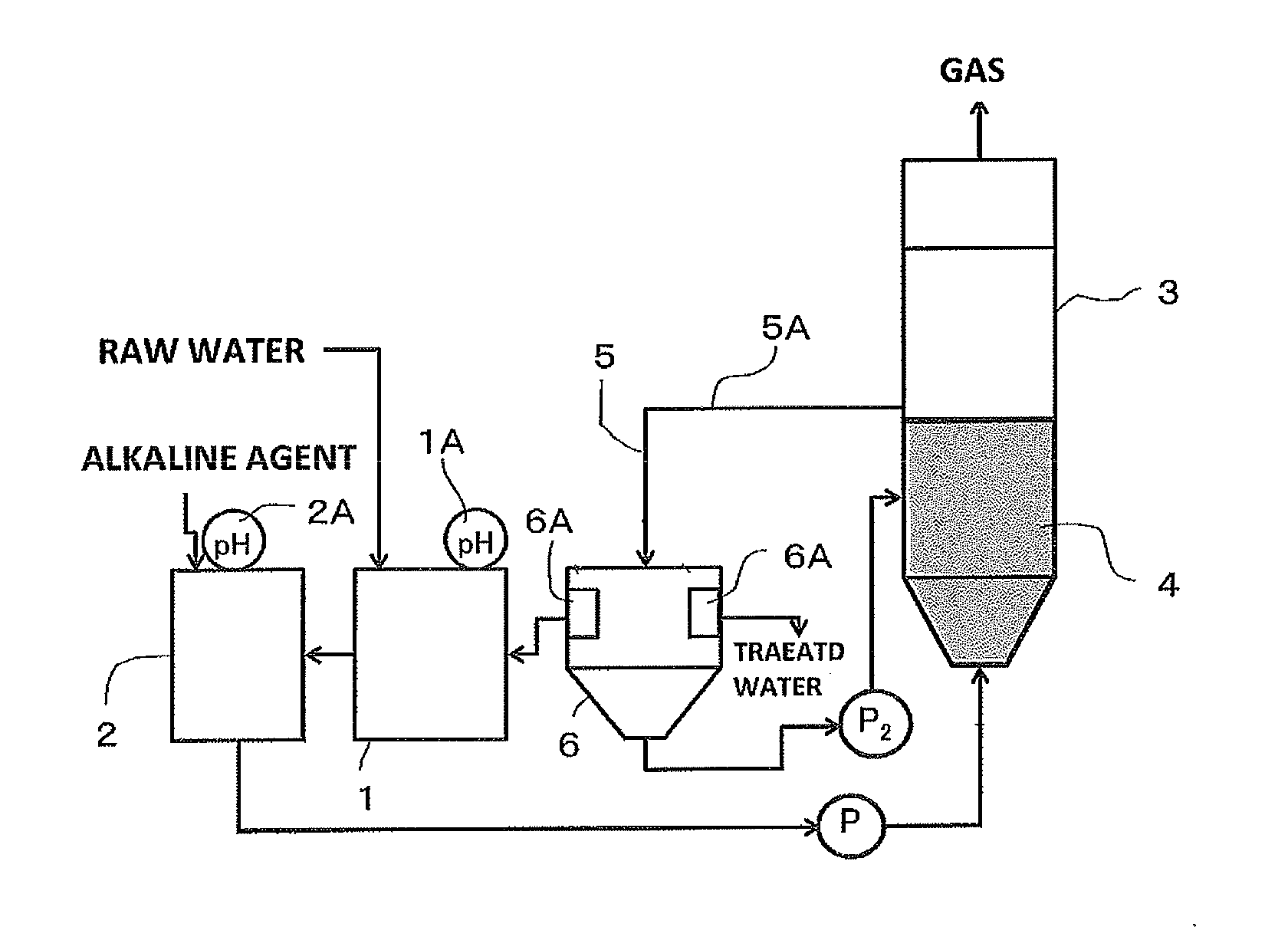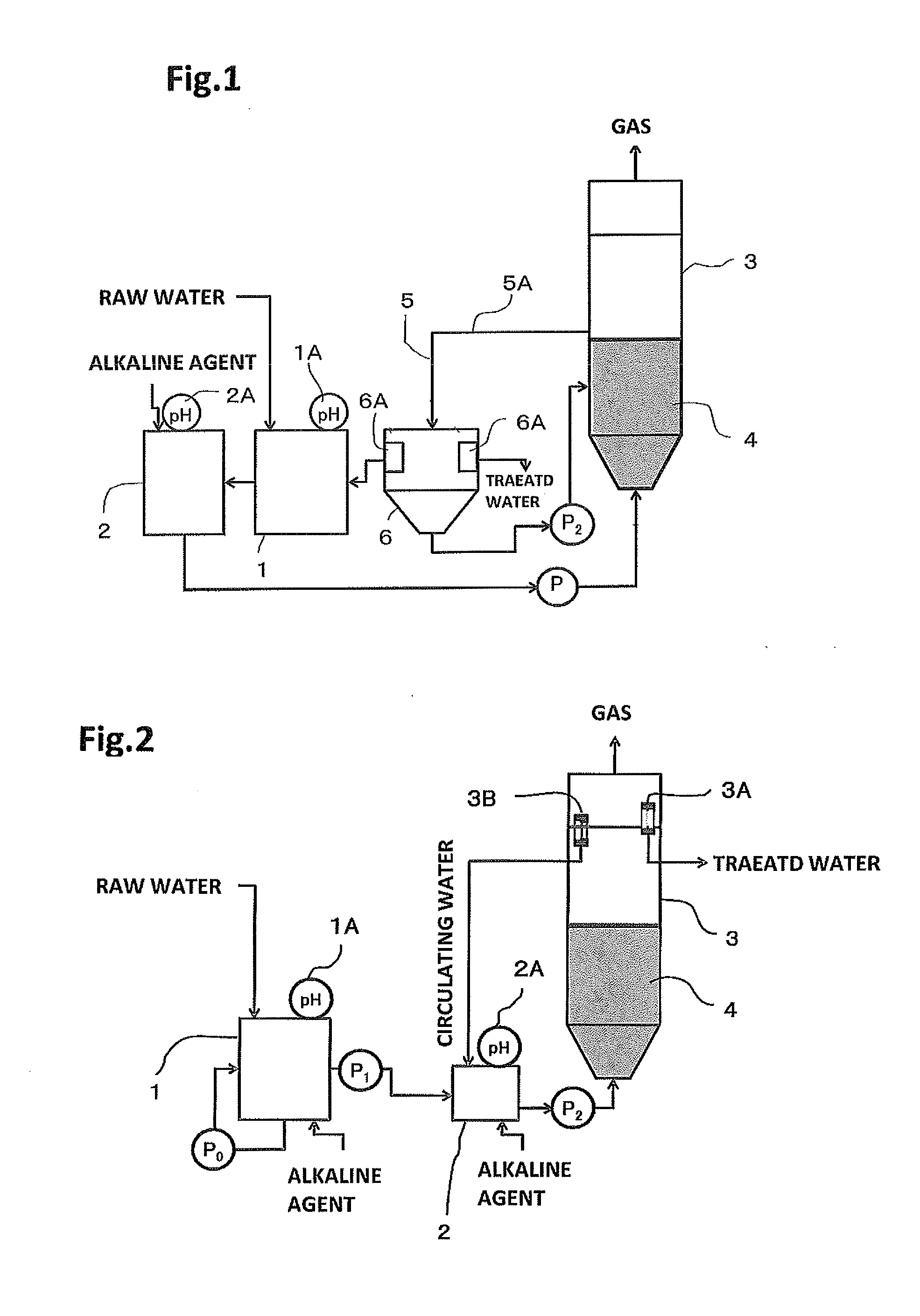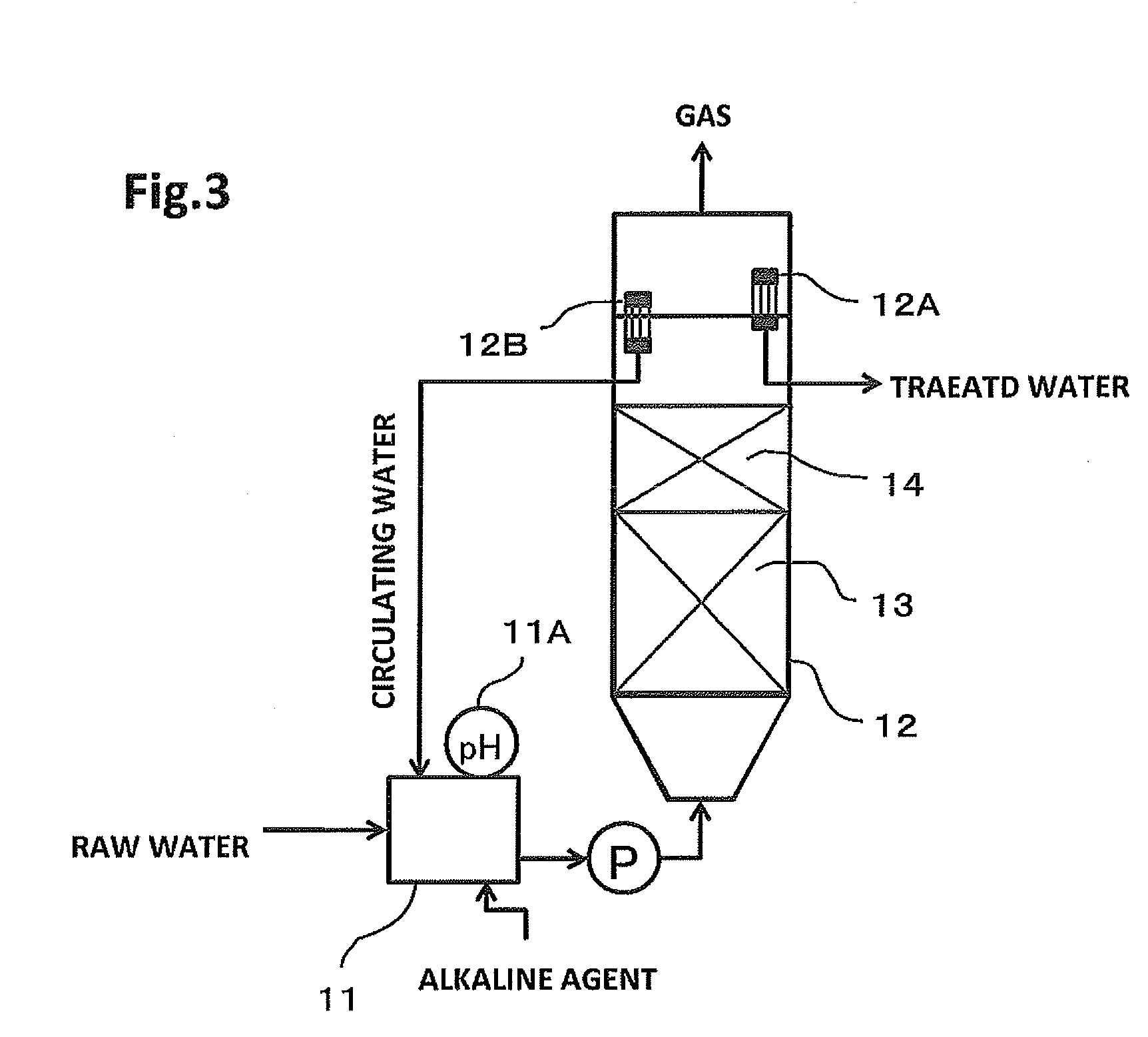Anaerobic treatment method and apparatus
- Summary
- Abstract
- Description
- Claims
- Application Information
AI Technical Summary
Benefits of technology
Problems solved by technology
Method used
Image
Examples
example 5
[0209]Synthetic wastewater mainly composed of a sugar (CODCr concentration 1000 mg / L (COD components: sugar 60% by weight, protein 20% by weight, and ethanol 20% by weight), pH 6.8) was treated as raw water in a biological treatment apparatus illustrated in FIG. 3.
[0210]In the biological treatment apparatus, raw water is introduced into a pH control vessel 11 to control pH and is fed upward to a reaction vessel 12 through a pump P. Part of water flowing out of the reaction vessel 12 is circulated as circulating water through the pH control vessel 11. The remainder is discharged to the outside of the system as treated water. 11A denotes a pH meter, and 12A and 12B denote screens.
[0211]At the startup, a reaction vessel (volume 10 L, diameter 15 cm, height approximately 65 cm) 12 was charged with 4 L of a polyolefin resin carrier (cylindrical, diameter 2 mm, length in the range of 3 to 4 mm) and 0.5 L of methanogen granules (sludge concentration 60 g-VSS / L, average particle size 2.3 mm...
PUM
| Property | Measurement | Unit |
|---|---|---|
| Length | aaaaa | aaaaa |
| Fraction | aaaaa | aaaaa |
| Fraction | aaaaa | aaaaa |
Abstract
Description
Claims
Application Information
 Login to view more
Login to view more - R&D Engineer
- R&D Manager
- IP Professional
- Industry Leading Data Capabilities
- Powerful AI technology
- Patent DNA Extraction
Browse by: Latest US Patents, China's latest patents, Technical Efficacy Thesaurus, Application Domain, Technology Topic.
© 2024 PatSnap. All rights reserved.Legal|Privacy policy|Modern Slavery Act Transparency Statement|Sitemap



